In pictures: Rooppur 2 passive heat removal system installed
26 January 2024
The installation of the inner and outer parts of the steel structures of the 215-tonne passive heat removal system was completed in two days on Rooppur 2 in Bangladesh, Rosatom says.
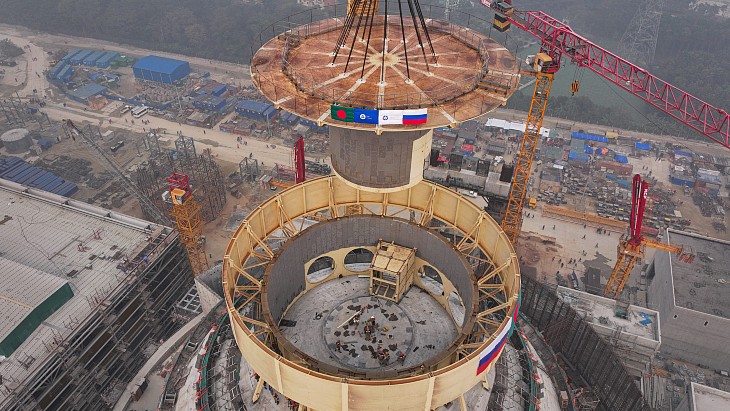 The structure sits on top of the reactor building (Image: Rosatom)
The structure sits on top of the reactor building (Image: Rosatom)The process involves the installation - with a maximum allowable deviation of 1 centimetre - of the two parts 64.5 metres high, bringing the reactor building's height to a total of 74.85 metres.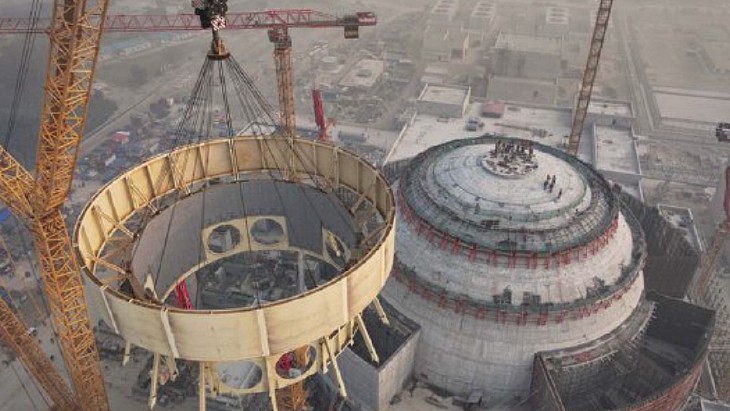
(Image: Rosatom)
The passive heat removal system (PHRS) is a safety feature which, in the event of a loss of on-site power supply, provides long-term heat removal from the reactor core to the atmosphere using natural circulation - outside air comes into heat exchangers, is heated up, then rises through air ducts to the outlet header located on top of the dome, and returns to the atmosphere, thus cooling down the reactor compartment. 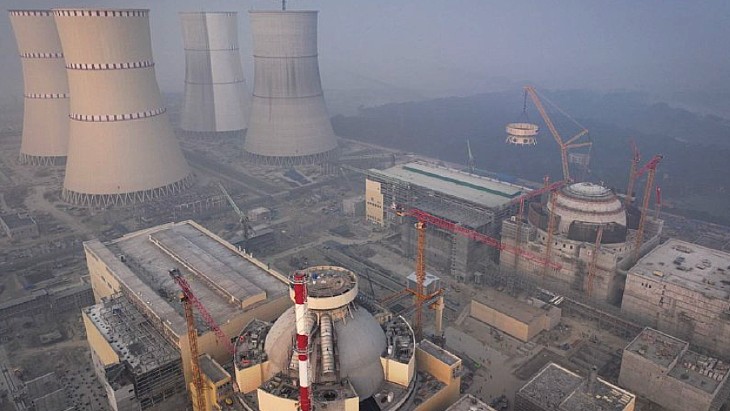
A PHRS can be seen in place on the first unit (Image: Rosatom)
The Rooppur plant, 160 kilometres from the capital Dhaka, will feature two Russian VVER-1200 reactors. Construction of the first unit began in November 2017 and it is scheduled to be commissioned in 2024. Construction of the second unit began in July 2018. They have an initial life-cycle of 60 years, with a further 20-year extension possible.
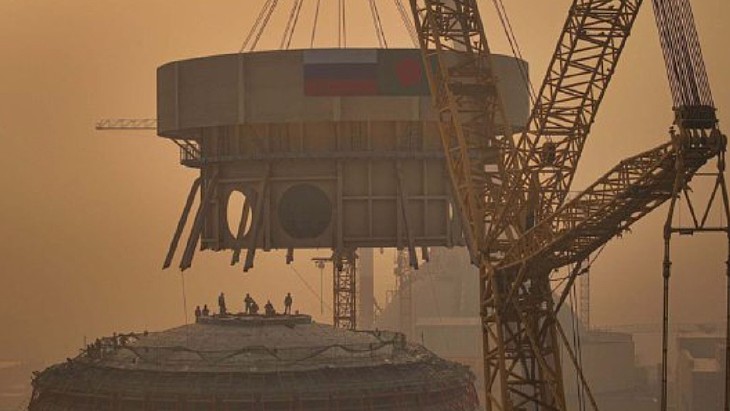 Workers on the top of the reactor dome helped with the precision task (Image: Rosatom)
Workers on the top of the reactor dome helped with the precision task (Image: Rosatom)
Bangladesh officially became a member of the international 'club' of nuclear countries in October when the first fuel for the plant was delivered to the Rooppur site. The project follows a February 2011 agreement with Rosatom for two reactors to be built at Rooppur for the Bangladesh Atomic Energy Commission. The initial contract for the project, worth USD12.65 billion, was signed in December 2015.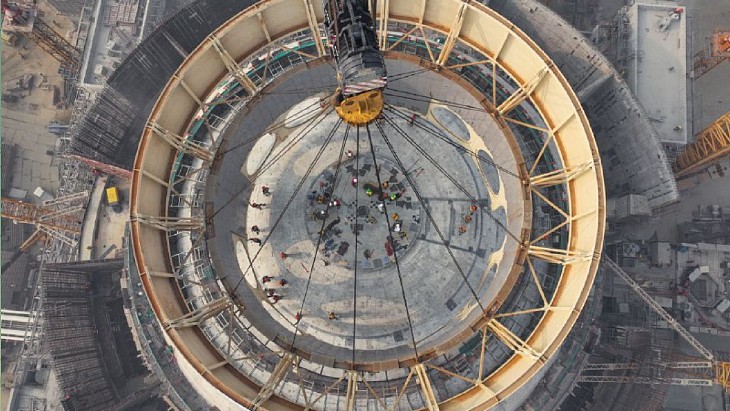
A bird's eye view (Image: Rosatom)
Alexey Deriy, ASE JSC vice president and director of the Rooppur NPP construction project, said: "Installing two parts of the PHRS deflector in the design position in two days is a record." He said the next stage was to install the service platforms and air ducts.
Researched and written by World Nuclear News
No comments:
Post a Comment